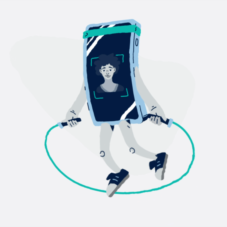From sci-fi to reality:
How biometrics has travelled through movie screens and into our daily lives
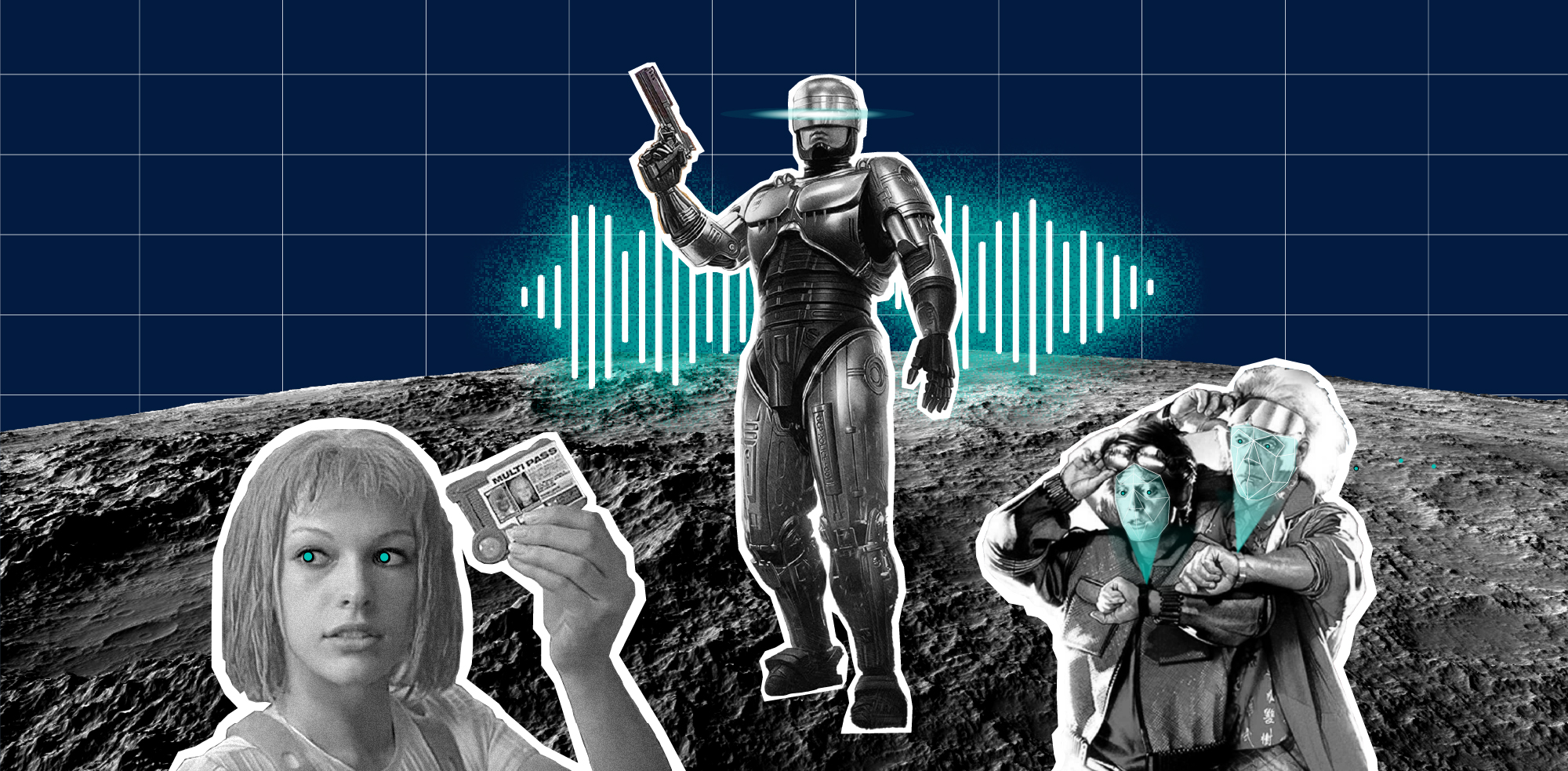
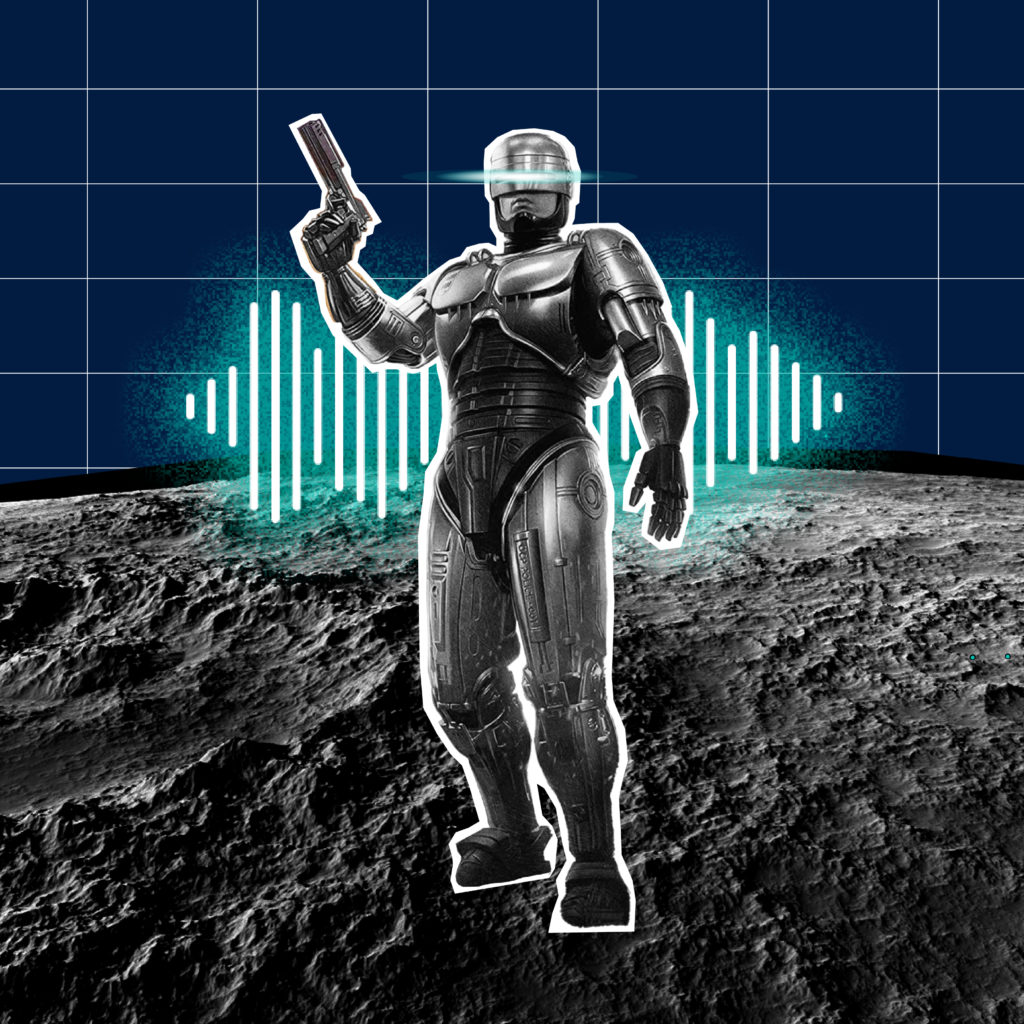
How well did sci-fi movies of the past predict the biometric technologies that are now a reality, and which sci-fi concepts have remained fiction?
“Alert! Alert! Emergency in the spaceship. To activate your evacuation module, put your palm on the screen, then proceed to a retina scan. To operate your spacecraft, use voice commands. Any unauthorised personnel will be denied access…”
Decades ago, sci-fi writers and directors were envisaging high-tech futuristic worlds in which our eyes could open secret rooms, our faces acted as passwords and our fingerprints unlocked ultramodern devices; essentially, where our bodies became the ultimate keycards.
Fast forward to today, and most of the advanced biometrics described by science fiction are not just real – they’re an integral part of our daily lives. But which futuristic visions actually became a reality, and which ones stayed within the boundaries of cinematic experience and science fiction?
From sci-fi pioneers like Kubrick’s 2001: A Space Odyssey to dystopian Minority Report starring Tom Cruise, this article is a biometric reality check. It guides you through the epic cinematic history that introduced biometrics long before it became as common as unlocking your smartphone with a fingerprint.

2001: A Space Odyssey
Biometric used: Voice recognition

“Open the pod bay doors, HAL,” says Dave, when locked out of his spaceship, to the artificial intelligence computer operating the vehicle. “I’m sorry, Dave. I’m afraid I can’t do that,” responds HAL 9000 in the most memorable scene from Stanley Kubrick’s masterpiece, 2001: A Space Odyssey.
Looking back, the idea of travelling to Jupiter, as imagined by Kubrick back in the ’60s, is nothing compared to the fact that he also imagined artificial intelligence at a time when computers had a level of computing power comparable to today’s calculators.
Besides advanced AI, HAL 9000 was able to utilise face and voice recognition, read from lips, and even recognise human emotions. Interestingly enough, the movie raises very current moral and ethical questions about AI and its potential pitfalls, after HAL becomes aware of itself and starts protecting itself at the expense of humans.
Reality check
Although we don’t use our voices to command space computers, we can ask Siri to play our favourite music or Alexa to tell us about the weather. Voice recognition is also commonly used in banks as a means to verify account owners, although many institutions and services are now shifting to face recognition as a more reliable biometric modality. However, the use of our voices to interact with technology is very much a reality.
US bank customers prefer voice
Many US banks still use voice recognition for phone services, investing in complex algorithms to detect and prevent spoofing attacks. This preference for voice recognition over face biometrics is culturally driven, with only 40% of American bank customers willing to use face biometrics.
However, this choice represents a paradox because voice recognition is less secure than face recognition due to AI’s ability to copy voices. The US banking sector thus faces a challenge in balancing technology, security and customer preferences.
The Fifth Element
Biometric used: Palmprint recognition

A colourful futuristic world filled with flying cars, aliens, crazy orange hairstyles, bondage-style costumes, Bruce Willis… and biometrics. This classic sci-fi movie by French director Luc Besson combines all the aspects that make sci-fi movies a hit.
The Fifth Element follows the story of a being called Leeloo, a vital element (or, to be precise – the fifth element) that will save the world from the apocalypse. And what better way to save it than by using palm biometrics to access crucial information and activate the divine light, a powerful weapon? Apart from handprint recognition, the movie also featured other biometric modalities, like face recognition and special police scanners that could identify different species.
Reality check
We use handprints or palmprints on smart door locks to access secure facilities, but they are rare (unless you have some divine light to activate). Although it may be a more visually attractive biometric that looks appealing and “hi-tech” in the movies, in reality, palmprint is not as widespread as other biometric modalities such as fingerprint and facial recognition.
This is mostly because fingerprint technology has existed for longer, so it’s more standardised, cheaper, and found in many more devices, like smartphones. Palmprints also need more space on devices and are therefore not as convenient or suitable in many instances.
Minority Report
Minority Biometric used: Retina scan, iris scan, face recognition
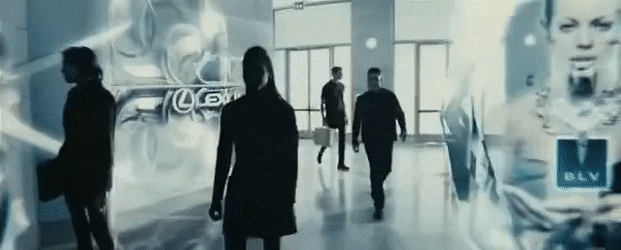
If there is a movie that is essentially a parade (although a scary parade) of biometric technology, it’s Minority Report. Omnipresent surveillance, verification and identification in this futuristic world where Tom Cruise fights to prove his innocence are all based on biometrics. Retina scanning, iris scanning, face recognition – it’s all there.
To prevent getting caught, Cruise’s character, Chief John Anderton from the “Precrime” division – yes, there is also the aspect of foreseeing future crimes – undergoes eye-swapping surgery to avoid retina identification. However, he keeps an old eyeball to maintain access to secured areas. This Spielberg movie raises many questions about privacy, data misuse and other ethical aspects of technology. Most remain remarkably relevant, even more than 20 years after the movie’s release.
Reality check
Most of the biometric modalities showcased in the movie are present in our daily lives. Fortunately, they aren’t used in such a pervasive way. What we are still waiting for, though, is gesture-based interfaces that would allow us to interact with computer systems using just the movement of our hands. As for the eye, retinal scans rely on an intricate system of blood vessels. So, a dead eye – even on ice – would probably lead to a dead end.
Face over iris
In movie portrayals of biometrics, iris recognition is often used to show the importance of access to secret and inaccessible places, such as the Precrime police department in Minority Report.
However, in real life, facial recognition technology is considered a more secure option. So, while movies correctly predicted the possibility of using iris recognition for access control, the practical choice is to rely on face biometrics for better accuracy and safety.
Back to the Future 2
Biometric used: Fingerprint identification
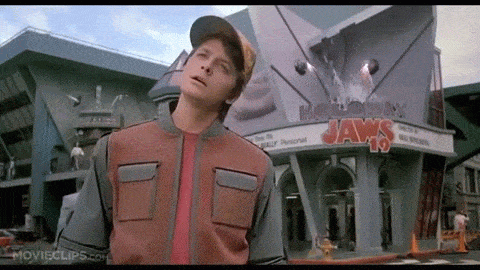
Released in 1989, Back to the Future Part II envisions the future in the year 2015. Apart from time travel, the movie displays a lot of technology based on fingerprint identification – including using fingerprints to unlock doors through security access scanners, and even (very forward-thinking for that time) to validate digital payments.
Fingerprints are such an important feature in the ‘90s hit that the movie featured “thumb bandits” – criminals who amputate fingers to gain access to high-security places. Besides fingerprint recognition, the movie also showcases voice recognition technology when Marty Jr., the main character, uses voice commands to order food from Café 80’s.
Reality check
Although the movie mainly explores the consequences of altering the past and the future, it got the idea of biometrics quite right. Fingerprints have become the pinnacle of verification for digital payments, with face recognition now catching up.
In the movie’s version of 2015, where people used their thumbs for payments, thieves were going to the extremes of chopping them off. However, this idea of thieves cutting off thumbs – while also managing to steal smartphones with credit card information – is definitely more science fiction than reality. A smartphone’s sensor only works with fingers or thumbs still attached to a living person. Plus, in reality, it’s more likely that a person would share their password voluntarily rather than going to extreme measures like losing a thumb.
Blade Runner
Biometric used: Retina scan

Although Blade Runner features various types of biometrics, retina scanning is the one that really stands out. The storyline revolves around identifying “replicants”, who are bioengineered humanoids, and terminally “retiring” them. The “Voight-Kampff” test was the primary tool used in the movie for distinguishing these replicants from humans. It measures the emotional responses of a “person” by monitoring physiological changes, such as pupillary dilation and blush response, in reaction to a series of emotionally provocative questions.
The idea behind the test is that replicants lack genuine emotional responses, so they would not react to the questions in the same way as humans would. The film raises interesting questions about the purpose of biometrics in a world where the line between artificial and human becomes blurred.
Reality check
The retina is one of the most reliable biometric modalities available. Because it is difficult to spoof, the technology is typically deployed in top-level security applications for authentication and identification.
As for the “Voight-Kampff” test, although we don’t need to identify “replicants” just yet, a modern version of such a test could use an MRI scanner and monitor brain responses to different stimuli, such as scary or unsettling pictures. Based on the response in the part of the brain called the amygdala, we could assess an individual’s levels of empathy.
Science fiction that stayed fiction
Movies have also envisioned many fantasies that haven’t come true. Let’s mention just some of them.
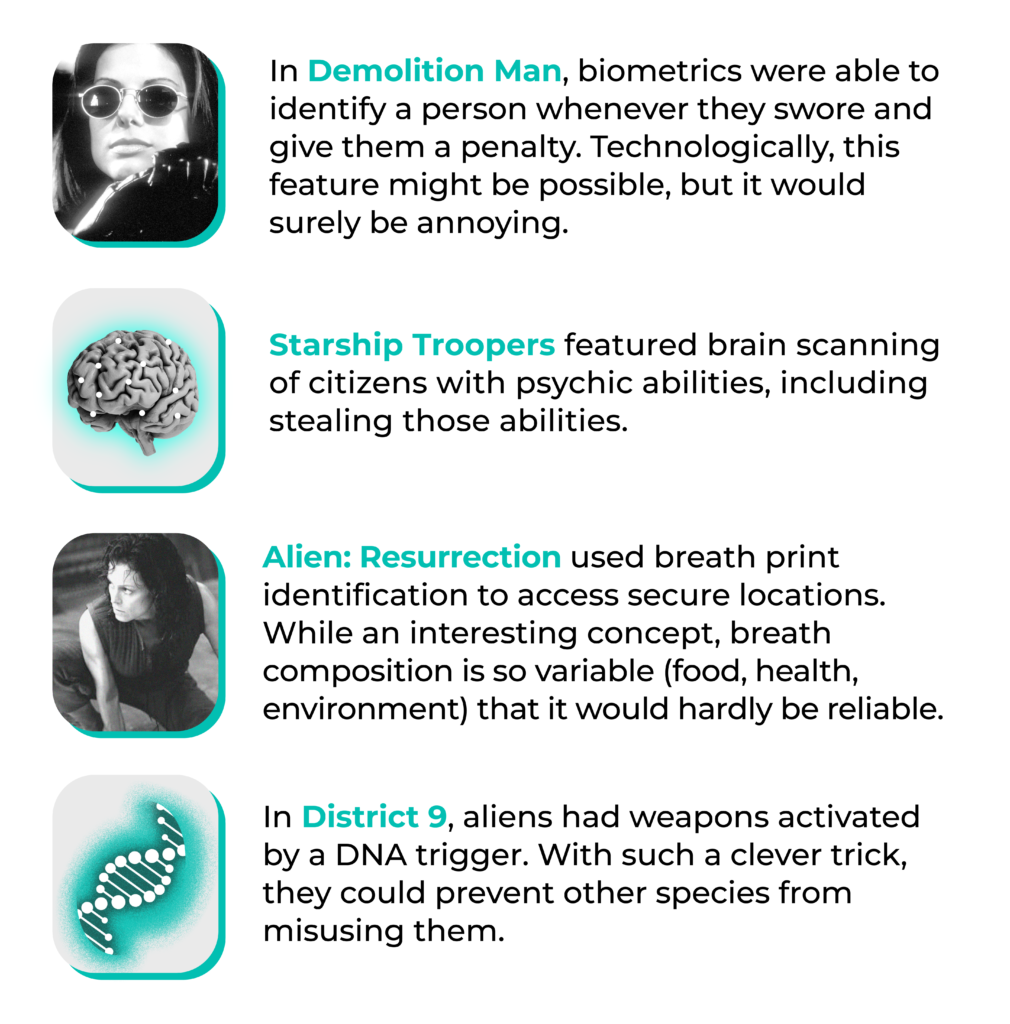
A multimodal approach will enhance the accuracy and security of the authentication and verification processes by leveraging the strengths of different biometric traits. Imagine face authentication combined with voice and iris, or verification for an online payment using both face and fingerprint identification. Combining multiple biometric factors will make the system even more robust and resilient to spoofing attempts and attacks, and create a safer environment for users.
What is sci-fi about now?
Biometrics took the spotlight in sci-fi movies during the booming ’80s and ’90s. Fast forward to today, where we casually unlock our phones with faces or fingerprints, and biometrics doesn’t feel so futuristic anymore. But fear not. Sci-fi creators are still able to take us on thrilling journeys that are now even more sophisticated, like time travel in the movie Tenet or the space-exploring movie Interstellar.
Our dread of evil aliens also remains, just like in Alien: Resurrection or District 9. As we grapple with fears of illness and death, modern sci-fi delves into cloning, especially focusing on creating clones for life-saving organ transplants. And, of course, the age-old theme with newfound possibilities persists – the ever-fascinating world of artificial intelligence.
AUTHOR: Jana Nováková






